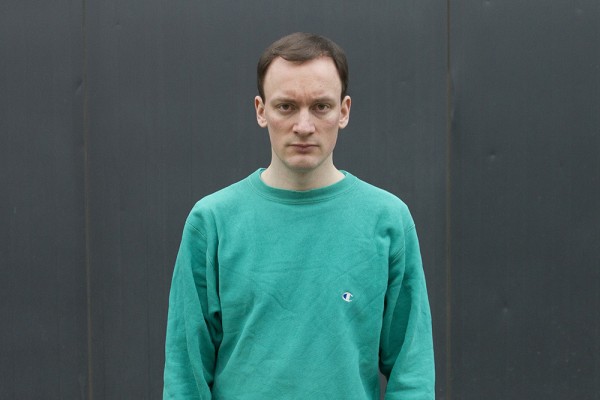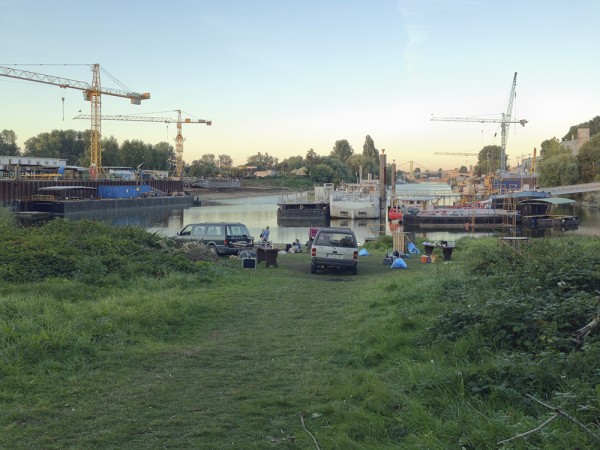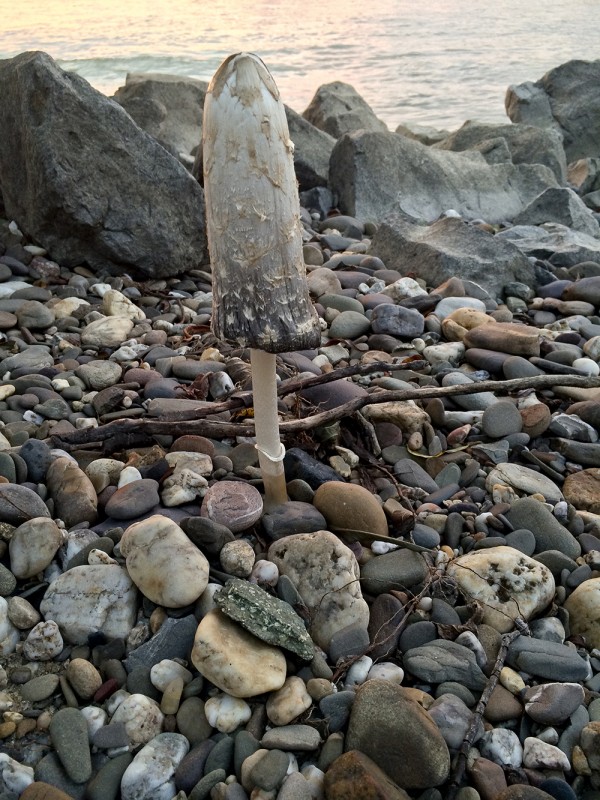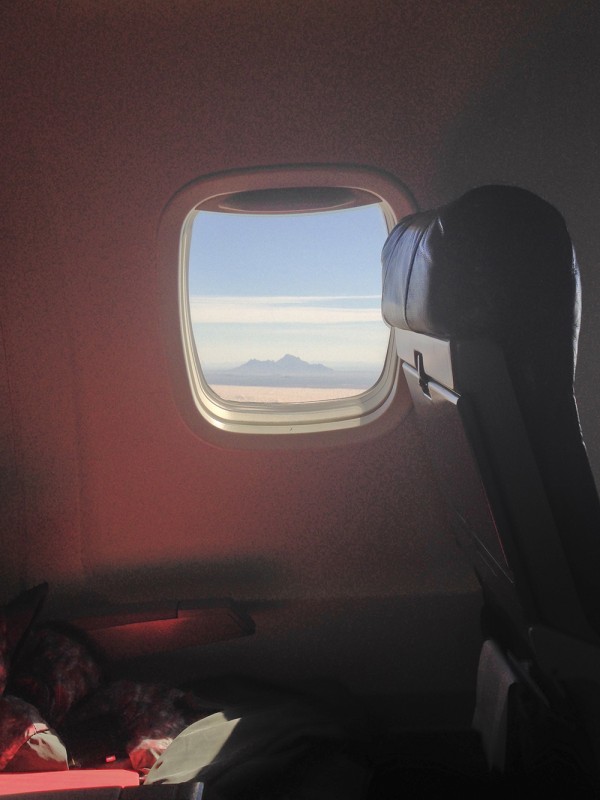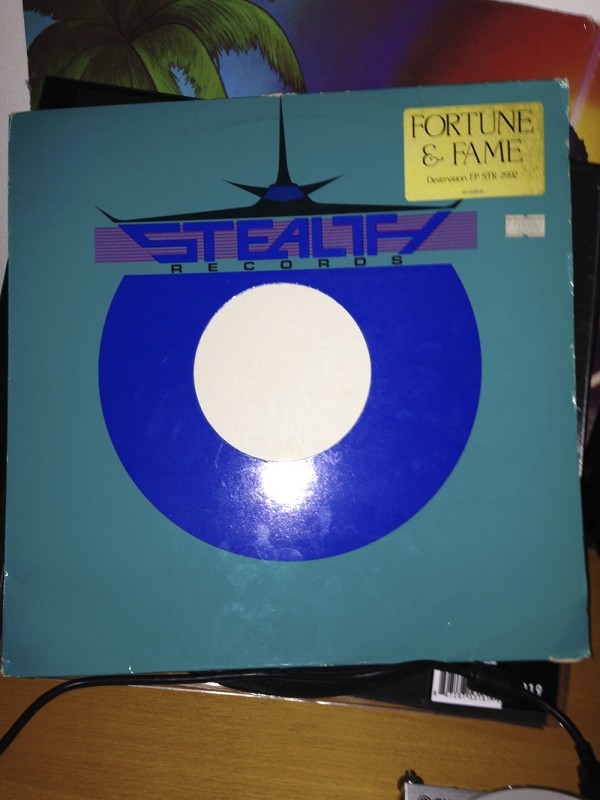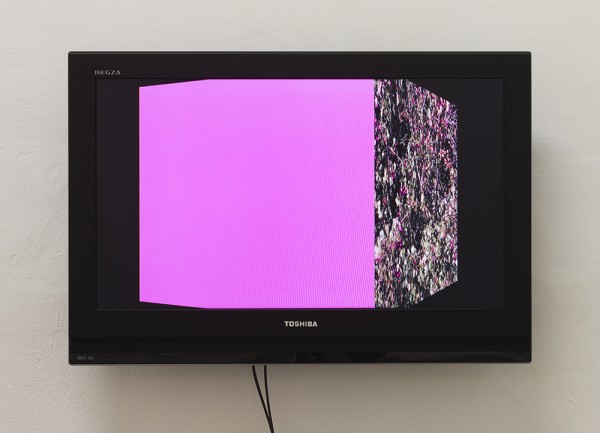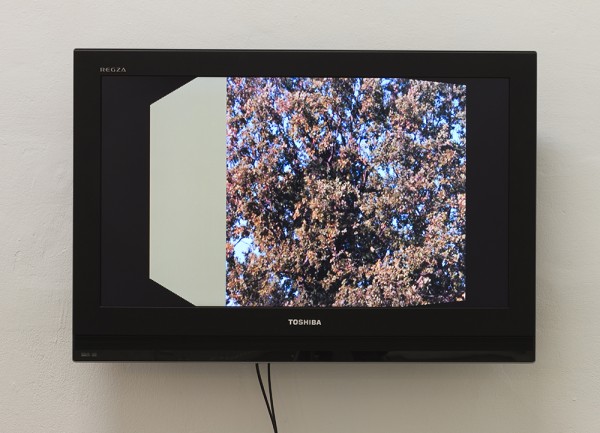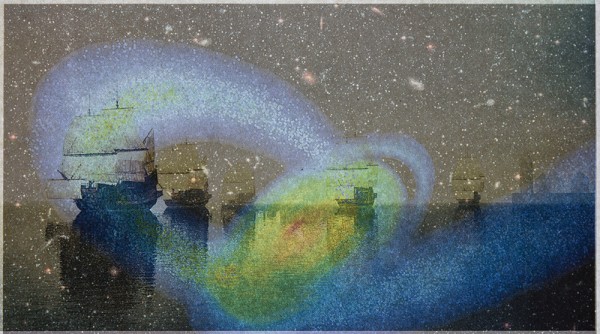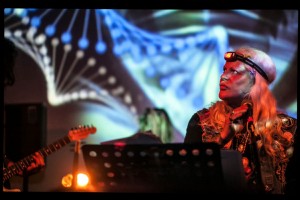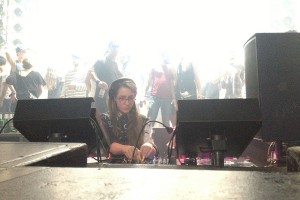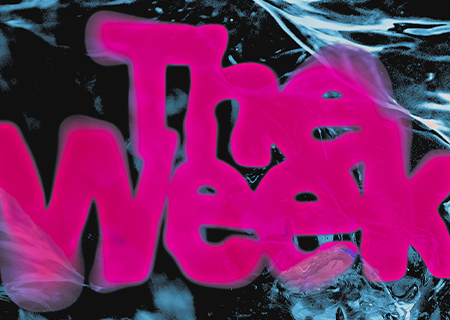“I am a dancer, a clubber, who finds in the studio what kicks himself the most.”
With the 2012 release of his überhit „Geffen“ on Cómeme, the life of Daniel Ansorge aka Barnt changed rather drastically. Suddenly everybody wanted a piece of him. Never an easy moment – but the Cologne-based producer knew how to handle the pressure. He decided to chill, enjoy the ride and produce two more hymns which would have the same impact: „Tunsten“ and „Chappell“.
Now, four years later, the time is right for his debut album „Magazine 13.“ The title refers to the label Magazine that he runs with his pals Crato and Jens-Uwe Beyer. Although still definitely a club record, the album also plays with elements of classical, ambient and even krautrock. I met Daniel Ansorge in his flat, in the Deutz-Mühlheimer Hafen, where he’d just arrived, somewhat late from an intense weekender.
Daniel, how does it feel to finally release the album everybody’s been wanting since your first 12-inch hits?
I wanted to do this for a long time, but I wanted to wait till it felt right. Why should anybody produce an album with only two 12-inches in his catalogue so far? The first time it came to my mind for real was last year. But then I was traveling so much through Mexico, the USA and also playing so many summer festivals, that I had to postpone it to the following year.
The most important thing was that there was no pressure. The label is my own, so that felt okay. A lot of people say in interviews after their albums come out, that they need a holiday now because the production was so intense. I think this reflects the status quo, where the album is an over-important statement in the career of an artist. A lot of people react to the pressure by overplaying it – and you hear that in a lot of records.
I started the production in spring of 2014 and worked, including the final mix, till June / July on it. Most of the times in blocks of two weeks in a row.
So you blocked time off for that?
Yes. In the beginning six weeks. I did not try to produce a milestone – I simple wanted to make good music. If you ask me, my „His Name EP“ on Hinge Finger, the label of Joy Orbison is just as important to me. The album is named „Magazine 13.“ – with that I wanted to say how much I love my label, and at the same time underline that it is just another catalogue number.
Are you a night or day producer?
Right from the start, I’ve done most things in my life late at night. Even at school I was awake so late at night, that it took a lot to make me go to school in the morning. I am so much more productive late at night when nobody calls me up anymore. Daytime I like to work on mixdowns, they need a lot of time as I need a lot of stops in between to relax my ears.
Are you able to go loud here in the apartment?
Absolutely. There is a family below me, but they always think their children are loud.
Your album sounds so free, like no strings attached.
Oh yes. But I have a concept.
What’s that?
For the painter the canvas is the key, for me it’s the bass drum. I did not want to produce one of these lounge albums. As a DJ I am always disappointed when one of my favourite 12-inch-artists comes up with an album that evades its club roots and tries to include other genres. For me the bass drum and +- 120Bpm are the core of my message. All my tracks must be playable in the club. This is not an intellectual concept, just the strait-jacket I go for.
Got ya. But still those tracks do not sound like the 12-inch ones. They’re broader somehow.
True. There is no need to tell the whole story within one song. The album gives me the freedom to create tension, over eleven minutes and more from time to time – which is long, even for techno.
Not when your name is Ricardo Villalobos.
You’re right! He’s just released a 23-minute remix of DJ Pierres´ „What Is House Muzik?“.
Talking about length, James Murphy did a „45:33“ long track, on cd lasting even 71:02 minutes.
And my label partner Jens-Uwe Beyer has released an 80 minute one.
Okay. You won.
Is the first track of the album, ,„Wiggett: So we know that hexog****
“ also the one you did start the recording process with?
No.
I thought so because the hi-hats mark the start so perfectl.y
True. Indeed I knew the moment I came up with it, that it was the perfect opener.
It captures the album’s sense of freedom really well.
The track is happy in itself. I can’t really explain it deeper, maybe the feeling comes from some of the synthesizer sounds I used…
The whole album is pretty happy.
Indeed.
In my review of the album, I write that the album gives you the feeling to have arrived at a safe place, where you want to stay forever.
Well said! The only track that doesn’t fit this picture is the last one: „ All the alts I’m holding are hurting“. It is so sad, at least for me – but sometimes you need to start with exactly that kind of sadness to get happy.
The album sounds really warm throughout.
I get that too. But I understand people who think that the 12-inch on Hinge Finger is in opposite not a warm one – there the melody is more like a rhythm.
On the album, the listener can sometimes lose track of which is the main melody and which are the supporting ones. So many of them are dancing in this room, so you don’t know who’s dancing with who…
Beautifully put. I remember that one day I mixed down a track with someone who learned about all this in music college. He told me off, saying I’d put my melodies all together in the same frequency band. A no-go! But in the case of ,„Wiggett: So we know that hexog****“ it was important for me that I know who is the leader of the pack. So, thank God you got it!
You know this dancefloor feeling, when you hear a lot of voices in the dark? You’re a bit scared but at the same time, especially when a bit drunk, you love the idea of listening to them, going where they want to go…
Exactly. You know that feeling when a song comes to your mind, that you wanted to hear in the DJ mix for like, the whole night? But then you realise it is not happening – you just wished so hard for it that you felt its prescence.
It last happened to me at Berghain last weekend, when Rolando played. For ages I’ve wanted someone to play his Aztec Mystic-classic „Jaguar“. Of course he’s the last person to play his own number. But still I find myself hoping so at least three times.
„Now it comes… Now it comes…“ Funnily enough, I often experience this with my own tracks, when I am still working on them. Of course not possible at all. On the other hand often someone plays one of my tracks and a friend tells me so, but I do not get it at all. Well, those friends are good club listeners, I am more the guy to get lost in sounds and time.
You said earlier that the mix of the album of the album is easy for you. Do you have music in mind already when you produce a track?
That comes a bit later, in the beginning it’s difficult to grasp the energy level of a new song. Is it one that will sit well with the other stuff? Is it too bombastic? If you’ve heard my DJ sets you’ll know I DJ in waves, changing the energy level a lot. That said, for some of these new tracks I’m already thinking about certain venues, certain rooms. Trouw in Amsterdam for example, where I played last weekend.
Upstairs or downstairs?
Upstairs. A very emotional set as this was the birthday party of Trouw booker Job Jobse, who was the very first person who booked me outside Cologne, Düsseldorf and Berlin. We are really good friends now, so we celebrated all weekend there with others like Steffen Bennemann of Nachtdigital, Optimo and Gerd Janson.
My tracks would sound completely different if I hadn’t been a clubber for so long. When I produce I always have club situations in mind. A certain moment at Berghain for example, when the PA there, which is so physically present, gives me the feeling to do whatever I wanna do. I am a dancer, a clubber, who can find in the studio that thing that kicks himself the most.
Your tracks sound like produced in one flow, a jam. Not at all like following a concept.
That’s how I roll. But from that state of freedom and improvisation, I then reduce the tracks step by step till you get a basic one like “Geffen”.
Should I picture you jamming on synths?
Yes. As said, I would have loved to be a concert pianist. But I was not talented enough, so this is my second try.
Interesting. The club context now is the absolute opposite of the classical concert venue: instead of sitting down on your seat you go nuts on the dance floor.
Total freedom. I am very lucky. This freedom to play is something I owe Cologne Tape Band – the band I share with Ada, Axel Willner of The Field, Jens-Uwe Beyer, Jörg Burger (Burger & Voigt), Crato, Philipp Janzen (Von Spar) and Mario Katz. The idea to start together a label like Magazine is old, it come up around 2007/2008 when we were all so bored by this 8-bar house music which thinks it’s as deep as Larry Heard. So we hadn’t found our sound back then, but with Cologne Tape it suddenly all became so clear. Here was this music bringing the Cologne/Düsseldorf Ursound and our own identity in this little industrial group we all live in together.
A project like this only works out, when everybody’s approach shares the same freedom.
Exactly. That’s why we only get together when we are ready for the fun to happen. When we came together five years ago, I was still in process of discovering my musical identity. So it showed me not to narrow my roads, to believe in still letting go. I don’t take any drugs while producing, but still I can be as open-minded enough to combine a Bach minuet or a toccata with techno music.
Your music creates a scene, it defines a room. That said, is there really a lot of space for other music in the DJ mix, to sit alongside tracks from this album? You answered this one before by saying: yes, I could open easily corridors within my sound.
Totally. For example tracks like „Wiggett“,„22:25“,„Cherry Red“ and „How do I know what solutions x form?“ are perfect for most moments in my sets. Speaking technically they’ve got all the things you need: 8, 16 or in the case of “Cherry Red” even up to 128 bars with just drums, where you could easily add a melody on top. In the case of “Cherry Red”, the bass drum comes so late, I have all the space in the world.
Earlier on you said you are not so much able to separate the melodies in your head – but hearing you DJ I get a different picture.
Maybe this comes from the fact that I listen to and absorb the melodies like a dancer. If I had to extract each melody separately from a set, I would go mad.
You were unsuccessful for quite some time before “Geffen” made you suddenly very popular. How did this change feel for you?
My first record, “What Is a Number, That a Man May Know It?”, did get played by Caribou half a year after its release in his now famous Resident Advisor mix – the one he debuted three Daphni tracks. From there on a lot of DJs knew me. Half a year later Dixon chose one of the Cologne Tape songs and one of mine for his mix cd “Live At Robert Johnson”. This was even before he won the Resident Advisor poll. Now everyone bad mouths him as he is so successful – but that’s unfair, I am so thankful to him, understanding my music far beyond all others. He is such a great DJ and the pressure to play to so many people each night must be immense.
You were still studying at that time, right?
Yes, biology – I made it till my Doktorarbeit (the final written exam). But then I came to the point where I lost interest in science. All my friends are artists and musicians – so I changed paths and studied art.
Does being your age help handling the hype around you?
Yes. I am more sceptical. For example: I really find it hard to spend the money I make for expensive equipment as I still don’t see myself as a professional musician. Who am I to buy a 1000€ synthesizer? I mean I’m no Protestant, but I still think small. That’s because it was hard for so many years in just Cologne and Düsseldorf. I keep thinking, this might be over by next year! On the other side I am so much more able to enjoy the ride through all these great big clubs like Fabric in Lodnon, Robert Johnson in Offenbach or Berghain in Berlin I play. I am able to judge this world. Imaging how I would live through all of this in my 20s… well, that’s a different picture.
I hear you. In the early 20s you think of yourself as unstoppable – you go mad till you hit the wall. So now you are able to enjoy this fast life?
Well, right now it is indeed a bit too fast through all the album mania and gigs around that. I wish I would have more time to hang longer in all these great clubs I play. But still it is fantastic and sometimes I block me off like just in Trouw for the whole weekend.
I always wonder how the A-list DJs handle this as they run through up to 5, 6 gigs a weekend. Can they really even remember their sets? Why do they sign up for such mania – is it the fear that all might be over the next day?
This is difficult to answer for me as I still stay 30 hours at Berghain – just to be clear, I did not plan to stay that long, but when it’s so good, well, you know yourself, so I postponed my train back.
It is not so much for the money. Honestly, I do not get a kick out of it. But I take the good money straight to the bank as I remember those days of no money at all.
True. When I asked you two years ago about your album, you answered that you wanted to enjoy the ride now, given you had so many negative things going on before.
And still I am not at all in the league of people like Dixon and Gerd Janson. I play around 60 to 70 gigs a year, not like 200. Those first 60 are the ones you really dig.
When did you know the moment had come, to take a break, sit down and produce the album?
We live in weird times. Through the internet, everything’s got so fast. I try not to follow that trend so much – by not producing an album in 2012, by not taking every remix job offer, by saying ‘no’ in general. You always have to ask yourself: what does the other person want from me, and what do I want from him? The younger you are, the more often you fall into the trap to get over excited when someone wants something from you – well, often they suck you dry that way. As a music lover, I am quite good in judging which labels and folks are a worthwhile connection for me and which aren’t.
Did you start with a lot of material in your pocket?
Yes. Often I do not follow a idea from the first second – I come back after some time, so I have a better eye for what’s really good and what’s just average.
In general I work a lot with synthesizer presets – of course I change them, for “Geffen” for example I used a trumpet preset two octaves below. I call this process soft-sampling! There’s a certain history within them, a huge energy level. While sampled sounds give you also the person, the room, that specific moment of recording, in synth presets you still find an special, single aura.
When you speak about the process of coming back to an idea later on – that means you are quite well organised.
Indeed. You should not forget: I studied biochemistry! This structured side of mine is a good base for my artistic side. By being also a visual artist I realised, you can’t have a world-changing idea everyday.
Good call. As we wrap up, let’s talk a bit about your other artistic identity. You’ve got an artist space at the Kölnischer Kunstverein.
I got that scholarship shortly after “Geffen” exploded – and now I have to leave it soon as the next generation of artists come in. I studied art at the KHM Cologne as well as later on, for one year, in Düsseldorf at the Kunstakademie in the class of Marcel Odenbach.
I work with found footage – a totally different approach to my music. As an example: in 2011 I collected motion pictures from the years 2011, 1945 and 1978, the year right in the middle between the end of the second world war and 2011. Within those movies I searched for scenes without humans – I like the special, authentic, natural feel of the landscapes you find in these scenes. For me they are far less prepared, rehearsed than the ones you find in documentaries.
.
You primarily work with video?
I also work with photos. Once I photographed my old school French language book as I was surprised to realise that the main book was in color, while the additional one was just in black and white.
Once a year I visit Nazi crime sites. Instead of photographing the monument there, I make a photo of the sky and note down the times and date. I started with this in 2009 and wanna keep it going for the years to come – so there will be a series of cloud pictures.
What’s going on with these daily newspapers back there in the corner?
When you read the newspaper, you sometimes see that a picture on one side is starting a dialogue with a picture on the back side. Together this leads to a third thing. Obviously this isn’t intentional, but still the photo editor did choose both pictures.
I love the ghosty style of the pictures.
I keep every newspaper I read. Later on I cut out the photos I really dig, collect them and at one point I decide which one to take for the series and which to throw away. At the end I photograph the pages – the photos have a very singular identity, but I don’t know where it comes from.
Daniel, thanks a lot for this long and interesting talk.







